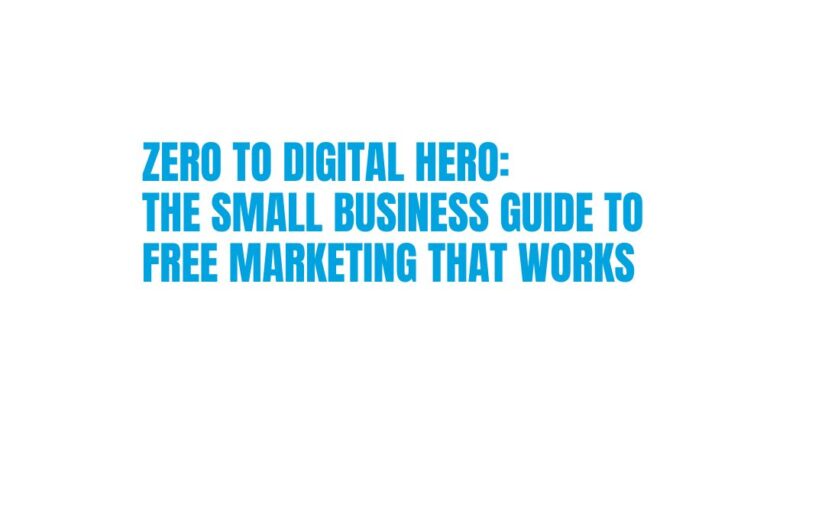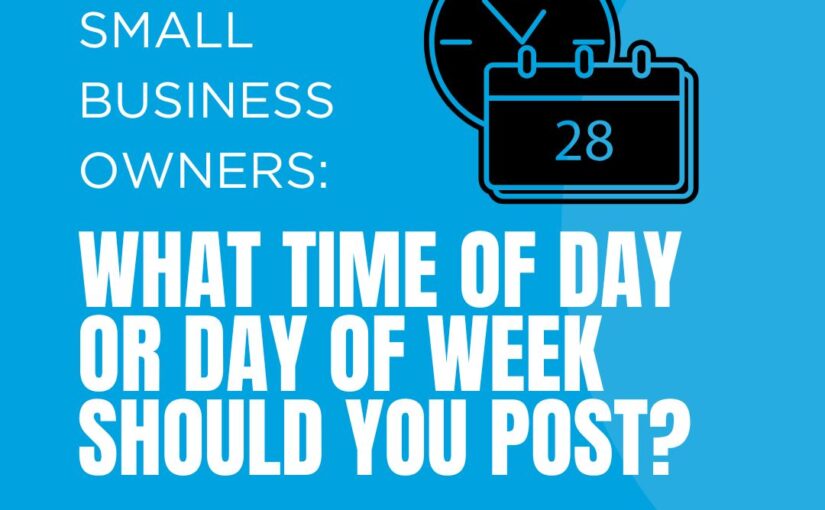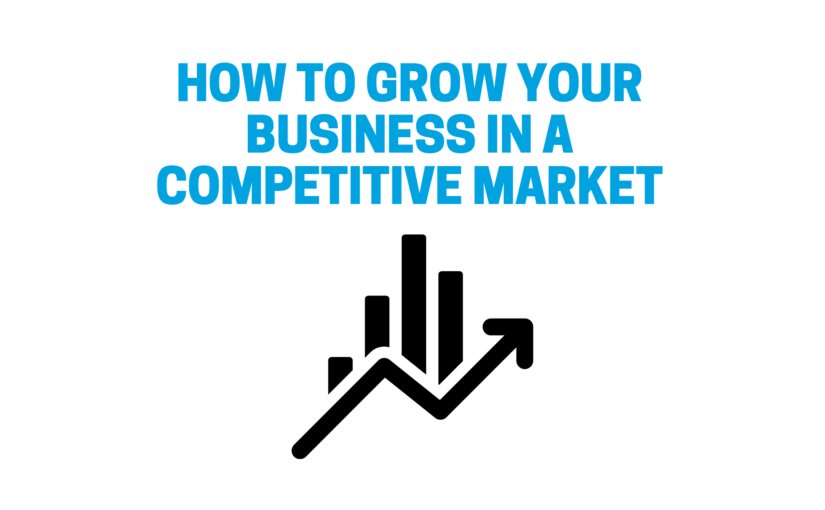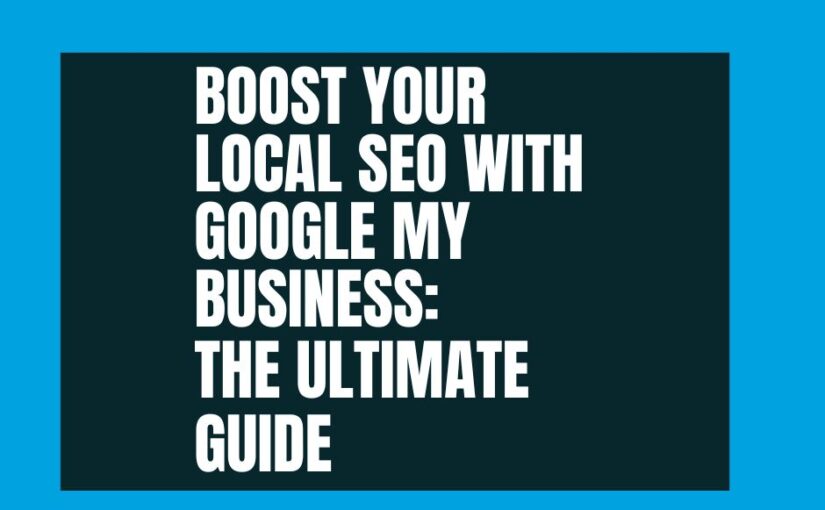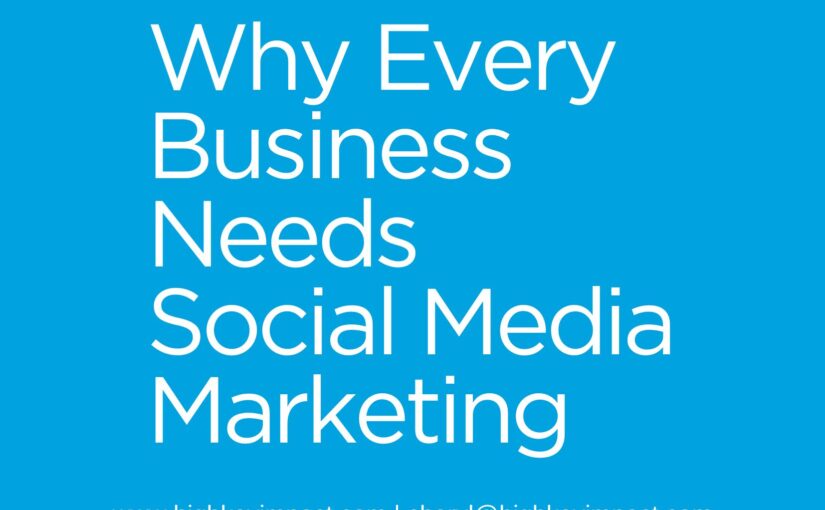Zero to Digital Hero: The Small Business Guide to Free Marketing That Works
The Small Business Guide to Organic Marketing Success
By Cheryl Friedenberg
Digital Marketing Consultant
High Key Impact, LLC
Blue Bell, PA & West Palm Beach, FL
Table of Contents
- Introduction: Why Organic Digital Marketing Matters for Small Businesses
- Building Your Digital Foundation: Creating a Website That Works
- SEO Fundamentals: Getting Found Online
- Social Media Mastery: Platform-Specific Strategies
- Reputation Management: Turning Reviews into Revenue
- Implementing a Review Generation System
- The Digital Marketing Audit: Your Roadmap to Success
- Conclusion: Putting It All Together
Introduction: Why Organic Digital Marketing Matters for Small Businesses
After fifteen years of helping small businesses navigate the digital landscape, I’ve seen countless trends come and go. What hasn’t changed is the fundamental truth that organic digital marketing remains the most cost-effective, sustainable way for small businesses to build a loyal customer base.
Unlike paid advertising, which stops working when you stop paying, organic marketing builds assets that continue generating business for years. It’s like owning a property rather than renting—over time, your digital assets appreciate rather than drain your bank account.
As a small business owner, you might feel overwhelmed by the constantly evolving digital landscape. I wrote this guide to cut through the noise and give you actionable strategies that have stood the test of time. These are the same techniques I’ve used to help hundreds of local businesses across the country transform their online presence from invisible to influential—without breaking the bank.
Let’s get started on your journey to organic digital marketing success.
Building Your Digital Foundation: Creating a Website That Works
Your Website Is Your Digital Storefront
Before discussing specific marketing channels, we must discuss your digital foundation: your website. Think of your website as your digital storefront—open 24/7, representing your business even when asleep. Would you open a physical store with broken windows, confusing signage, and products scattered randomly? Of course not. Yet many small businesses do exactly this online.
The Myth of Website Complexity
One of the most persistent myths I encounter is that building an effective website requires technical expertise or significant financial investment. You don’t need to be technically adept anymore. With platforms like WordPress, Wix, and Squarespace, creating a professional-looking website has never been simpler. You can also outsource to a website designer or developer who typically uses WordPress.
The key is focusing on these elements:
- Mobile-First Design: Over 60% of web traffic now comes from mobile devices. Your website must look and function flawlessly on smartphones.
- Page Load Speed: Research shows that 40% of visitors will abandon a website that takes more than 3 seconds to load. Use tools like Google PageSpeed Insights to test your site’s performance.
- Straightforward Navigation: Visitors should find what they want within three clicks. Think about your customer journey and design accordingly.
- Compelling Calls to Action: Every page should guide visitors toward taking a specific action—contacting you, signing up for a newsletter, or making a purchase.
- Contact Information: Make your phone number, address, and hours visible on every page. Don’t make potential customers hunt for this information.
Technical SEO Checklist
While content and keywords (which we’ll cover next) are crucial, certain technical aspects of your website directly impact your search rankings:
- Mobile Responsiveness: Google primarily uses the mobile version of your site for ranking.
- Site Speed: Compress images, minimize code, and consider a content delivery network (CDN) to improve loading times.
- Secure Connection (HTTPS): Sites without SSL certificates (showing as “not secure” in browsers) are penalized in search rankings.
- Structured Data Markup: Help search engines understand your content with schema markup (Schema.org).
- XML Sitemap: Submit your sitemap to Google Search Console to ensure all your pages are discovered and indexed.
By focusing on these foundational elements, you’re not just creating a website—you’re building a powerful marketing asset that forms the hub of your digital presence.
SEO Fundamentals: Getting Found Online
The Power of Organic Search
Search engine optimization (SEO) might sound technical, but at its core, it’s about being found by people actively looking for what you offer. Unlike interruption marketing, SEO connects you with customers with buying intent.
Keywords: The Language of Your Customers
The most effective SEO starts with understanding the exact word groupings and phrases your potential customers use when searching. After fifteen years in this industry, business owners are often surprised by the disconnect between industry terminology and customer language.
Start by listing 20-30 search terms related to your business, then use tools like:
- Google Keyword Planner
- Ubersuggest
- AnswerThePublic
These will help you expand your list and identify terms with reasonable search volume and lower competition.
Content That Converts
Once you understand customer language, you need content that addresses their questions and needs. This content should:
- Target-Specific Keywords: Each page should focus on one primary keyword and several related terms.
- Answer Customer Questions: Format content to address specific pain points and questions.
- Include Local Signals: For local businesses, include city names and neighborhood references naturally in your content.
- Maintain Readability: Use short paragraphs, bullet points, subheadings, and conversational language.
- Update Regularly: Search engines favor fresh content, so update your website regularly.
The Backlink Algorithm
One of the most misunderstood aspects of SEO is backlinks—links from other websites to yours. These act as “votes of confidence” in search algorithms.
In my experience, small businesses get the best results by focusing on:
- Local Business Directories: Ensure your business is listed consistently on Google Business Profile, Yelp, Yellow Pages, and industry-specific directories.
- Chamber of Commerce and Business Associations: Membership often includes a link to your website.
- Local Partnerships: Exchange links with complementary (not competitive) local businesses.
- Community Involvement: Sponsor local events or charitable causes that mention sponsors on their websites.
- Content Partnerships: Contribute guest articles to relevant publications in your industry.
Quality always trumps quantity with backlinks. Ten links from reputable, relevant sites will boost your rankings more than 100 links from low-quality sites.
Social Media Mastery: Platform-Specific Strategies
The Strategic Approach to Social Media
After working with hundreds of small businesses, I’ve found that social media success depends not on being everywhere but on excelling where your specific audience spends their time. Let’s break down the unique opportunities on each platform:
Instagram: Visual Storytelling
Instagram rewards businesses that showcase their human side. The platform’s visual nature makes it ideal for:
- Behind-the-scenes Content: Show your team during the work day, during the production process, or show off your office culture. A florist showing the early morning flower market runs, or a restaurant sharing prep work creates authentic connections.
- User-Generated Content: Encourage customers to share their experiences with your products or services using a branded hashtag. A mattress store I worked with increased engagement by 47% by featuring customer photos of mattress deliveries.
- Instagram Stories: Use the 24-hour format for time-sensitive announcements, polls, and authentic moments. The casual nature allows personality to shine through.
- Instagram Reels: Short-form video content typically sees 22% higher engagement than standard posts. A furniture store in Montgomery County, PA, created reels with simple decorating tips that dramatically increased its local following.
Facebook: Community Building
Despite reports of its decline, Facebook remains powerful for small businesses, particularly those serving customers over 30. Focus on:
- Facebook Groups: Create a community around topics related to your business. A local physician I work with built a Facebook group around wellness and health activities, food, and lifestyle in the local area.
- Live Video: Facebook prioritizes live content in newsfeeds. Weekly live sessions answering customer questions can dramatically increase organic reach.
- Local Events: Facebook’s events feature remains unmatched for promoting in-person gatherings. Even simple in-store promotions benefit from the platform’s location-based notifications.
- Thoughtful Sharing: Instead of just broadcasting, create conversation starters. Posts that ask questions generate 2x the comments of standard announcements.
- Customer Spotlights: Feature loyal customers (with permission) to create community recognition and word-of-mouth.
LinkedIn: Establishing Authority
For B2B businesses or professional services, LinkedIn offers unparalleled opportunities:
- Thought Leadership Articles: The built-in publishing platform reaches professionals who are already in a business mindset. A consistent publishing schedule (even monthly) builds authority.
- Strategic Commenting: Engaging thoughtfully on industry leaders’ posts often yields better visibility than creating original content.
- Employee Advocacy: Encourage team members to share company business page content, expanding reach by an average of 561% compared to brand-only posting.
- Case Studies: Sharing specific client success stories performs significantly better than generic service descriptions.
- Video Content: LinkedIn’s algorithm favors native video, with company page videos sharing 5x more engagement than other content types.
Google Business Profile: Your Local Visibility Engine
While not traditional social media, Google Business Profile (formerly Google My Business) deserves special attention for local businesses:
- Google Posts: Regular updates appear directly in search results. Weekly posts about promotions, events, or news can drive significant traffic.
- Q&A Feature: Proactively add common questions and answers before customers ask them.
- Photo Updates: Businesses that add new photos weekly see 42% more directions requests and 35% more website clicks.
- Booking/Messaging Features: Enabling direct communication options reduces friction in the customer journey.
- Products/Services Catalog: The often-overlooked catalog feature gives you free Google Shopping listings.
Cross-Platform Integration
While each platform deserves a tailored approach, innovative businesses create content ecosystems where platforms support each other:
- Content Repurposing: Transform longer LinkedIn articles into Instagram carousel posts, Facebook discussions, and Google Business updates.
- Cross-Promotion: Use Instagram to share behind-the-scenes, Facebook to promote events, LinkedIn to demonstrate expertise, and Google Business to capture local search intent.
- Consistent Voice: While format changes between platforms, maintain a consistent brand voice that mirrors your business personality.
Remember: consistency trumps frequency. It’s better to maintain an excellent presence on two platforms than a mediocre presence on five.
Reputation Management: Turning Reviews into Revenue
The Crazy Impact of Online Review Ratings
A startling statistic: a Harvard Business School study found that a one-star increase in Yelp rating leads to a 5-9% increase in restaurant revenue. Your online reputation isn’t just about vanity—it directly impacts your bottom line.
Key Review Platforms for Small Businesses
While numerous review sites exist, focus your energy on platforms most relevant to your business:
- Google Reviews: These are critical for all local companies and appear directly in search results and maps.
- Yelp: Particularly important for restaurants, retail, and service businesses in urban areas.
- Nextdoor: Increasingly important for hyperlocal companies, especially home services.
- Industry-Specific Sites: Focus on verticals like TripAdvisor (hospitality), Houzz (home services), Healthgrades (medical), or Avvo (legal).
The Art of Review Response
How you respond to reviews is as important as the reviews themselves. 89% of consumers read businesses’ responses to reviews. Here’s my proven framework for effective responses:
For Positive Reviews:
- Personalize Your Thank You: Use the customer’s name and reference specific details from their experience.
- Reinforce Their Positive Points: Briefly highlight the aspects they enjoyed.
- Invite Their Return: End with a warm invitation to visit again.
- Keep It Concise: Aim for 2-3 sentences total.
Example:
“Thank you so much, Maria! We’re thrilled you enjoyed our new spring menu, especially the roasted vegetable pasta. Your kind words mean everything to our team, and we look forward to welcoming you back soon!”
For Negative Reviews:
- Express Appreciation: Thank them for taking the time to provide feedback.
- Apologize Specifically: Address their concern directly without making excuses.
- Explain the Steps you’ve Taken: Show how you’re addressing the issue.
- Take It Offline: Provide a direct contact method for resolution.
- Maintain Professionalism: Your response reflects your business character even if the review seems unfair.
Example:
“Thank you for bringing this to our attention, John. We sincerely apologize for the delay in your service last Tuesday. We’ve implemented additional staff training to ensure this doesn’t happen again. I’d appreciate the opportunity to make this right. Please contact me directly at (email or phone number) to discuss this further.”
Monitoring Your Online Reputation
You can’t manage what you don’t measure. Set up a systematic approach to review monitoring:
- Google Alerts: Create Google alerts for your business name, industry + location, and key personnel.
- Review Management Software: Tools like Podium, BirdEye, or ReviewTrackers consolidate reviews from multiple platforms.
- Weekly Review Check-ins: Designate weekly time to respond to new reviews across all platforms.
- Sentiment Analysis: Track the specific aspects of your business mentioned most frequently (positive or negative).
Responding promptly and professionally to all reviews indicates that customer feedback matters to your business—a quality that attracts new customers.
Implementing a Review Generation System
The Psychology of Review Requests
The biggest misconception about reviews is that happy customers naturally leave them. Satisfied customers rarely leave reviews unless prompted, while dissatisfied customers are highly motivated to share their experiences.
If you do not prompt happy customers to leave a review, you create a “review gap.” This gap misrepresents your typical customer experience. The solution is a systematic approach to review generation.
Creating Your Review Generation Framework
After implementing review systems for hundreds of small businesses, I’ve found this five-step framework consistently delivers results:
- Identify the Perfect Moment: Determine when customers feel most positive about your business. For restaurants, it might be right after a satisfying meal. For service businesses, it might be upon successful completion of a project.
- Create a Simple Request Script: Train staff to ask for reviews using a conversational, non-pushy approach.
- Remove Friction: Make leaving a review as easy as possible.
- Follow Up Appropriately: Send a gentle reminder if needed.
- Track and Adjust: Monitor which approaches generate the most reviews.
Technology Tools for Review Generation
The right technology makes review generation nearly effortless:
- QR Codes: Create custom QR codes that link directly to your Google or Yelp review pages. Place these on receipts, packaging, or table tents. A restaurant client in Blue Bell saw a 340% increase in Google reviews after implementing tableside QR codes.
- Text Message Links: Services like Podium or BirdEye allow you to send review request links via text message, which typically sees 5-8x higher completion rates than email requests.
- Email Automation: Set up post-purchase email sequences that request reviews at the optimal time (typically 24-48 hours after purchase or service completion).
- Point-of-Sale Integration: Most POS systems integrate review requests directly into digital receipts.
- Review Landing Pages: Create a simple page on your website that links to all your review profiles, making it easy for customers to choose their preferred platform. Only do this if you are confident in the reviews you will receive.
- Jotforms: Use a Jotform for ‘feedback’ on your customer service. When building the form, include areas for long answers when asking ‘how did we do?’. Also, include a rating option for your clients to give 1-5 stars. If they give 4-5 stars, then a condition can be added to the form which jumps to your Google Business Profile requesting a review.
Sample Review Request Processes
Here are specific workflows that have proven effective across different industries:
For Retail Businesses:
- Include a review request on printed receipts with a QR code.
- Train cashiers to mention the request during checkout
- Follow up with an email 24 hours later.
For Service Businesses:
- Send a “How did we do?” text or email after service completion.
- Include one-click links to Google and Facebook.
- Have the technician/service provider personally ask for feedback
For Restaurants:
- Include QR codes on check presenters or receipts.
- Have servers mention the code when delivering the check.
- Offer a small incentive for your next visit (such as a free appetizer) to show a completed review.
Legal and Ethical Considerations
While actively seeking reviews, always maintain ethical standards:
- Never Incentivize Positive Reviews: Offering rewards specifically for positive reviews violates most platforms’ terms of service.
- Don’t Gate Reviews: Don’t use services that filter out negative reviews before they reach public platforms.
- Respect Platform Guidelines: Each review platform has specific rules about solicitation. For example, Yelp explicitly discourages direct review requests, while Google permits them.
- Diversify Your Platforms: Don’t focus exclusively on one review site. Spread your efforts across relevant platforms.
Implementing a systematic review generation process will create a virtuous cycle that accurately reflects your customer experience and drives new business.
The Digital Marketing Audit: Your Roadmap to Success
Why Every Small Business Needs a Digital Audit
In my fifteen years as a digital marketing consultant, I’ve found that businesses often waste resources on ineffective strategies because they lack a clear understanding of their current digital performance. A comprehensive digital marketing audit identifies areas of focus for your online presence.
An Effective Digital Audit in 6 Steps
A thorough digital marketing audit examines six critical areas:
- Website Performance Analysis: Evaluating technical performance, user interface (UX), and conversion optimization opportunities.
- Search Visibility Assessment: Examining organic search rankings, keyword opportunities, and competitive positioning.
- Content Effectiveness Review: Analyzing existing content for engagement, conversions, and gaps in your content strategy.
- Social Media Performance: Measuring engagement rates, audience growth, and platform conversion attribution.
- Reputation Management Evaluation: Assessing review quantity, quality, sentiment, and response practices.
- Competitive Digital Analysis: Identify opportunities and threats by comparing your digital presence against top competitors.
Conducting Your Mini-Audit
While a professional audit provides the most comprehensive insights, here’s a simplified framework you can use to assess your digital presence:
Website Assessment:
- Run your website through Google’s PageSpeed Insights.
- Test mobile responsiveness on multiple devices.
- Check analytics for top exit pages (where visitors leave)
- Verify that contact information is visible on every page.
- Confirm all forms are correctly submitted and send notifications.
Search Visibility:
- Search your primary business category and location (e.g., “accountant in Blue Bell PA”)
- Note your ranking position for 5-10 relevant keyword phrases.
- Check whether your Google Business Profile appears for relevant searches.
- Verify your business information is consistent across directories.
Content Evaluation:
- Identify your three highest-performing content pieces (by traffic or engagement)
- Check publishing frequency over the past three months.
- Assess whether key services/products have dedicated content pages.
- Review content for clear calls to action.
Social Media Check:
- Calculate the engagement rate (interactions divided by followers) per platform.
- Identify your three highest-performing posts across all platforms.
- Check response time to customer comments or messages.
- Verify branding consistency across all profiles.
Reputation Review:
- Calculate your average rating across all review platforms.
- Measure the percentage of reviews that receive responses.
- Identify commonalities in positive and negative reviews.
- Compare review volume against top competitors.
From Audit to Action Plan
The value of an audit lies not in the data itself but in how you use it to improve your digital presence. Prioritize your findings into:
- Critical Issues: Problems directly impacting business performance (broken website features, incorrect business hours, negative reviews without responses)
- Quick Wins: Simple changes with immediate impact (updating meta titles, adding calls-to-action, setting up Google alerts)
- Strategic Initiatives: Longer-term projects requiring planning (content calendar development, website redesign, comprehensive review generation system)
Case Study: The Power of the Audit Process
A family-owned Italian restaurant in Blue Bell, PA, struggled to attract new customers despite excellent food and service. Our digital audit revealed several critical issues:
- Their website loaded slowly on mobile devices, causing 62% of mobile visitors to abandon before viewing the menu.
- Their Google Business Profile lacked crucial information about happy hour specials and outdoor seating.
- While they had 4.7/5 stars on Google, they had almost no presence on Yelp (a platform heavily used by tourists in their area)
- Their highest-performing social content focused on daily specials, yet they posted these inconsistently.
By addressing these specific findings, the restaurant saw a 27% increase in website traffic and a 34% increase in reservations within three months—without spending a dollar on advertising.
When to Bring in Professional Help
While many audit findings can be addressed internally, consider professional assistance when:
- Technical issues require specialized knowledge (website speed optimization, schema markup implementation)
- You lack the tools to conduct a competitive analysis
- You need objective insight into user experience issues
- You require a comprehensive content strategy based on keyword research
Remember that a professional audit typically pays for itself through improved performance and eliminated wasteful spending.
Conclusion: Putting It All Together
The Integrated Digital Marketing Ecosystem
Throughout this ebook, we’ve explored practical organic digital marketing proven methods. Let’s examine how these elements work together to create a cohesive system that generates sustainable business growth.
Your website is the hub of your digital presence—the destination where conversions ultimately happen. Firstly, I look at websites as the front door to your business. Search engine optimization ensures potential customers find this hub when actively looking for your products or services. Social media platforms provide multiple entry points to your digital ecosystem while building relationships with your audience. Online reviews and reputation management establish the trust for customers to choose your business. And regular digital audits ensure all these components work optimally together.
The Power of Consistency
The most successful small businesses I’ve worked with share one common trait: consistency. They publish content regularly, engage with their audience, and tweak their strategy based on performance data.
Consistency doesn’t require perfection or enormous time investments. A clothing store posting three thoughtful Instagram updates weekly will outperform a competitor who posts daily for a month and then disappears. Further, a service business that responds to every review—even if not immediately—builds more trust than one that reacts instantly but sporadically.
Creating Your 90-Day Action Plan
To implement the strategies we’ve discussed, I recommend creating a simple 90-day action plan:
Foundation Building: Days 1-30:
- Conduct your mini-digital audit
- Fix critical website issues (mobile responsiveness, page speed, contact information)
- Set up or optimize Google Business Profile
- Establish a simple content calendar for one primary social platform
System Implementation: Days 31-60
- Develop and implement your review generation system
- Create templates for review responses
- Identify and optimize your top 5 website pages for search
- Begin regular posting on your chosen social platform
Refinement and Expansion: Days 61-90
- Analyze performance data from your initial efforts
- Add a second social platform if appropriate for your audience
- Develop a simple keyword-focused content plan
- Create processes to ensure consistency as you scale activities
The ROI of Organic Digital Marketing
Accordingly, while paid advertising has its place, organic digital marketing provides small businesses with an unmatched return on investment. Unlike ads that stop producing results the moment you stop paying, organic assets appreciate over time:
- Content that ranks well continues driving traffic for years
- Reviews accumulate, creating an increasingly powerful trust signal
- Social media followers become more engaged as relationships deepen
- Website improvements compound, increasing conversion rates over time
One of my clients, a Philadelphia-based B2B business, invested approximately $5,000 in organic digital marketing implementation. Within 18 months, they attributed over $125,000 in new business directly to these efforts—a 25x return on investment.
Your Digital Marketing Journey
Remember that digital marketing is a continuous process for the long term, not a short-term win. Businesses that maintain consistency in their efforts over time invariably outperform those seeking overnight results.
This guide provides a clear how-to for your organic digital marketing journey. By implementing these proven strategies, you’ll create a digital presence that attracts your ideal audience, builds customer loyalty, and drives sustainable business growth without spending a fortune on advertising.
Here’s to your digital marketing success!
About the Author
Cheryl Friedenberg is the founder and principal consultant at High Key Impact, LLC, a boutique digital marketing consultancy with offices in Blue Bell, Pennsylvania, and West Palm Beach, Florida. With over fifteen years of experience helping small businesses develop effective digital marketing strategies, Cheryl specializes in organic approaches that generate sustainable results without excessive advertising spend.
Earlier, before founding High Key Impact in 2010, Cheryl led digital strategy for a real estate agent and a home healthcare business. At this time, most businesses were not online or even had a website. This is when she developed the some of the first local small business social media and content marketing programs. Cheryl holds a bachelor’s degree in marketing from Penn State University, has several years of B2B sales and sales management experience for Fortune 500 companies, and was voted ‘Best Mom and Wife’ by her two adult daughters and husband. She is available to speak at business networking groups and industry conferences about digital marketing strategies for small businesses.
Cheryl’s client-focused approach emphasizes practical, implementable strategies tailored to each business’s needs and resources. When not helping clients grow their digital presence, she enjoys fitness classes, pickleball, canasta, mahjong, baking, and exploring local restaurants in her dual Pennsylvania and Florida home bases.
For more information or to schedule a digital marketing audit, visit www.highkeyimpact.com or email cheryl@highkeyimpact.com.
